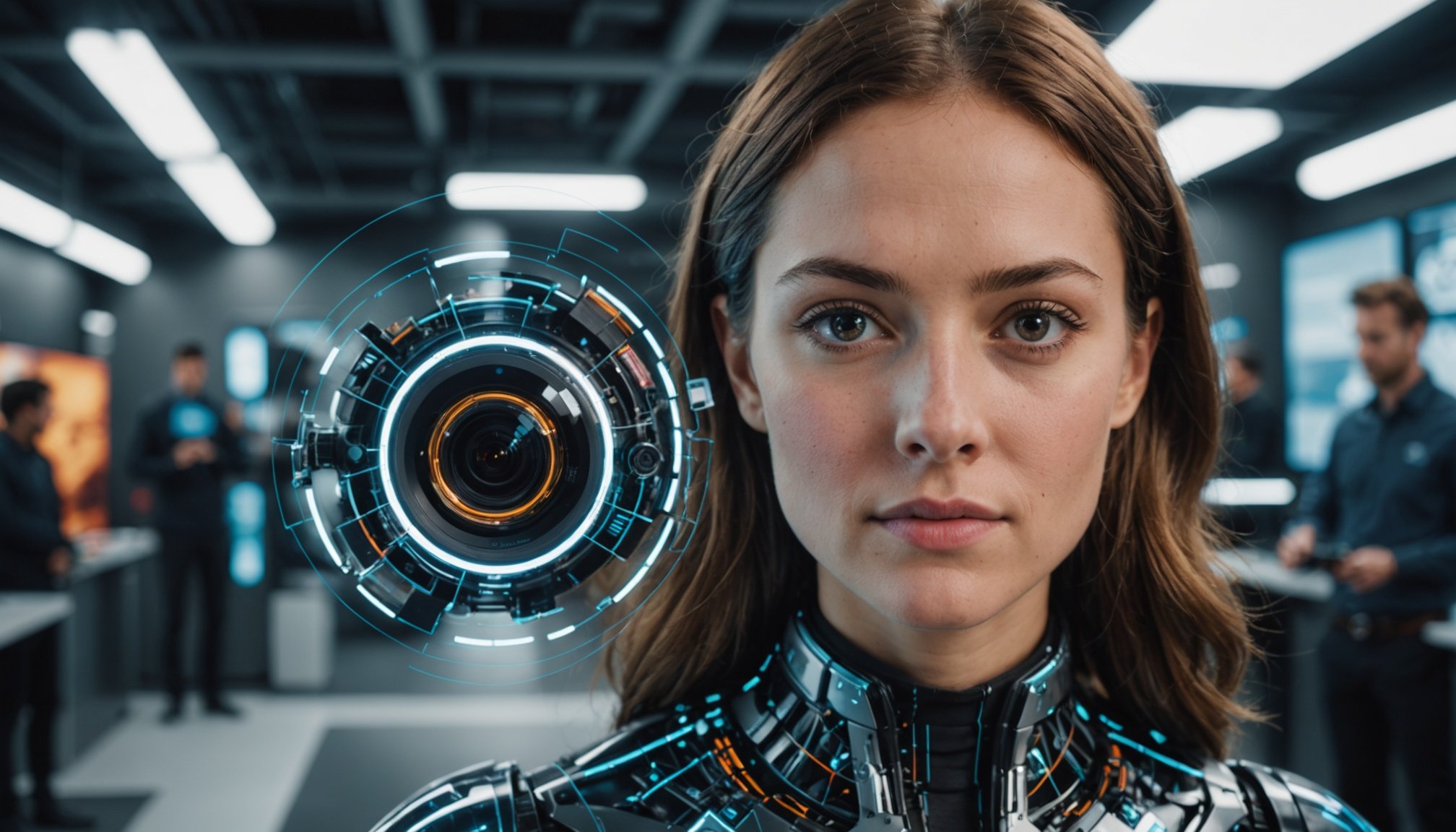Understanding AI in Digital Media
The integration of AI technologies into digital media has ushered in a new era of image and video quality enhancement. AI works by analysing content, detecting anomalies, and enhancing the overall aesthetic appeal. In this realm, AI employs advanced algorithms capable of refining visual attributes. Image enhancement tools utilize AI to adjust contrast, colour, and sharpness, making visuals more appealing. Video quality enhancement, often more complex, involves stabilizing footage, increasing resolution, and even reconstructing frames for better fluidity.
The significance of AI in digital media cannot be overstated. Modern content creation and consumption increasingly rely on these technologies for delivering superior visual experiences. AI’s capacity to automate these processes saves time and resources, allowing creators to focus on storytelling and creative direction.
In parallel : Mastering Real-Time Traffic Predictions: Building an Advanced Machine Learning Model for Optimal Forecasting,slugslug
Understanding key terms is crucial for navigating AI’s role in visual enhancement. Terms like ‘machine learning’, ‘neural networks’, and ‘deep learning’ frequently pop up. Machine learning enables systems to learn from data, improving efficiency over time. Neural networks mimic the human brain, processing vast amounts of data to recognize patterns. Deep learning, a subset of neural networks, excels at deciphering complex data layers, making it essential for sophisticated image and video enhancement tasks.
Popular AI Tools and Software
In the evolving domain of digital media, a multitude of AI tools and software options have surfaced to redefine image enhancement and video processing. These technologies play a pivotal role in refining visual content by automating complex tasks that would otherwise require significant time and effort.
This might interest you : Revolutionizing Social Media Insights: The Ultimate Guide to Building a State-of-the-Art AI Analytics Platform in Real-Time
Top AI Tools for Image Enhancement
Selecting the right tools for image enhancement can significantly impact final results. Tools such as Adobe Photoshop’s AI-powered features, DeepAI, and Luminar Neo are renowned for their ability to adjust contrast, enhance colours, and sharpen images. These tools are particularly praised for their user-friendly interfaces and advanced AI-driven capabilities that automate enhancement processes, making them accessible to both beginners and experts.
Notable Software for Video Enhancement
For video processing, solutions like Topaz Video AI, NVIDIA AI-enhanced video tools, and Adobe Premiere Pro’s Sensei offer sophisticated features such as resolution increase and frame reconstruction. These applications facilitate seamless video quality enhancement, making them invaluable in both professional and amateur video production workflows.
Comparative Analysis of Leading AI Solutions
A comparative look at these leading AI solutions reveals that while user experiences vary, the sheer capabilities and features provided by these applications are often the determining factors in their adoption. Cost considerations also play a vital role, with many users assessing pricing in conjunction with the accessibility of these AI tools.
Techniques for Utilizing AI in Visual Content
To leverage AI tools for image enhancement techniques, start by selecting an application like Adobe Photoshop or Luminar Neo. After uploading your image, utilize AI-driven adjustments for contrast, brightness, and sharpness. AI software often features automatic retouching capabilities, transforming your visuals with minimal manual intervention. This process not only refines aesthetics but also optimizes efficiency, allowing creators to maintain focus on content innovation.
For improving video enhancement methods, choose platforms such as Topaz Video AI or Adobe Premiere Pro’s Sensei. Begin by importing your video footage. AI functionalities aid in resolution upscaling, frame reconstruction, and noise reduction. These enhancements not only improve the visual quality but also ensure a consistent and polished output, essential for professional-grade production.
Blending traditional editing with AI advancements enhances both image and video projects. While AI streamlines basic improvements, manual adjustments cater to unique artistic preferences, achieving a customised result. Consider using AI technologies for routine tasks, and manual intervention for creative specifics. By integrating both techniques, digital media professionals can maximise consistency and quality in their visual outputs. This balanced approach to AI technologies ensures not only enhanced images and videos but also preserves the creative integrity desired in final productions.
Case Studies and Success Stories
In the realm of digital media, case studies offer compelling insights into the transformative power of AI. They showcase how companies have successfully integrated AI to enhance their visual content strategies. By examining these real-world applications, we can gain a better understanding of AI’s capabilities and its impact on visual quality and user engagement.
Company A: Image Enhancement Through AI
Company A implemented AI-backed image enhancement technologies to revamp their marketing efforts. Utilising tools that fine-tune contrast and sharpness, they dramatically improved the visuals used in their campaigns. This not only heightened customer engagement but also demonstrated the practicality of AI in streamlining complex processes. The project illuminated the advantages of incorporating AI into creative strategies.
Company B: Video Quality Improvements
For Company B, leveraging AI for video quality enhancement was a game-changer. The company’s challenges in maintaining high-resolution standards were addressed by AI software that increased video resolution and stabilised content. As a result, their viewer retention increased, showcasing AI’s pivotal role in professional video productions.
Lessons Learned from Successful Implementations
The analysis of these projects reveals that strategic implementation of AI can significantly uplift content quality. Moreover, these case studies highlight best practices, such as pairing AI solutions with human creativity, ensuring technology compliments rather than overshadows artistic input.
Best Practices for AI Usage in Digital Media
In an ever-transforming landscape, understanding best practices for AI usage in digital media can significantly enhance content quality and drive visual storytelling. A key guideline for integrating AI tools effectively is maintaining a balance between automation and human creativity. While AI technologies can streamline repetitive tasks like image adjustments or video edits, manual involvement ensures unique artistic interpretations remain intact.
Another critical aspect involves ethical considerations. Employing AI responsibly means ensuring transparency in its use and being mindful of potential biases that these technologies might perpetuate. Always monitor AI-driven content modifications to avoid unintended alterations that don’t align with your visual objectives.
Additionally, it’s essential to foster collaboration between AI solutions and creative teams. This ensures a seamless workflow where AI enhances, rather than dictates, the creative process. Regular training and upskilling sessions for media professionals can facilitate this integration, allowing teams to leverage AI’s full potential without compromising artistic integrity.
By adopting these best practices, digital media professionals can effectively utilise AI while preserving the essence of their storytelling goals. This approach not only enhances content quality but also assures a harmonious blend of innovation and creativity, paving the way for enriched viewer experiences.
Future Trends in AI and Digital Media
To understand AI’s evolving role in digital media, it’s crucial to identify upcoming trends. AI advancements continue to reshape not only how we produce content but also how audiences engage with it. As AI technologies mature, we see a shift towards more intuitive tools that simplify visual content creation.
Predictions for AI Technologies in Visual Content
AI technologies are expected to become increasingly sophisticated, offering more personalised and dynamic user interactions. The future holds potential for AI-driven platforms to automate complex tasks with precision, distinguishing between different artistic styles and adapting in real-time. These advancements promise enhancements in both image enhancement and video processing, allowing for higher fidelity and perceptual quality.
Emerging Tools and Innovations to Watch
In the coming years, new AI tools will likely feature improved machine learning algorithms capable of delivering instant enhancements and realistic effects. Innovations like these will redefine content creation, enabling creators to achieve visual quality at unprecedented levels. Monitor the development of such tools as they will greatly impact the industry standard.
The Evolving Role of AI in Content Creation
AI’s role will increasingly merge with creative processes, not just automating but actively facilitating innovative solutions and artistic expression. While AI improves and streamlines workflows, it will always require a human touch to balance technical precision with digital media narrative.











